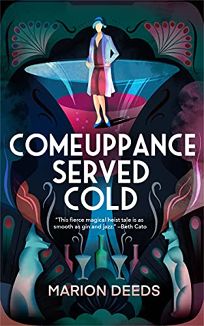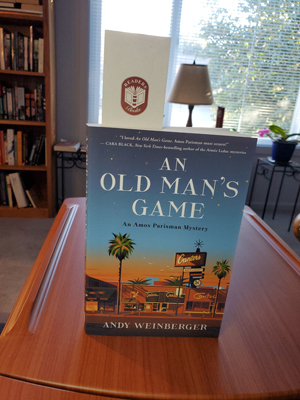Priya Parmar published Vanessa and her Sister in 2014. I found it used at the Four-Eyed Frog in Gualala. This book was just engaging enough for a leisurely weekend away. Parmar’s graceful prose made it an easy book to slip into, and I liked many things about it. It did not satisfy me completely, but I’m comfortable recommending it, especially for people who don’t know much about Virginia Woolf.
Woolf has been thoroughly studied and biographied; her intellectual, literary family the Stephens have also been thoroughly written about, and the group of writers, thinkers and artists Vanessa Stephen (Virginia’s older sister) and Viginia gathered around themselves after the deaths of their parents are well documented too. Almost everyone has at least heard of the Bloomsbury Group. Parmar plainly believed that Vanessa Stephen deserved some attention. (She’s been well-biographied too, but this is a novel.) Thus, Vanessa and Her Sister, written–at least at first–in the form of a secret journal, supplemented by letters, postcards and ephemera from the Bloomsbury Group itself.
No journals of the real-life Vanessa have been uncovered, although much of her correspondence with her sister has been preserved and published. In this book, we start reading the journal from the first Thursday night “salon” at the Stephen children’s new house in the Bloomsbury neighborhood. Vanessa lives with her brothers, Thoby and Adrian, and her sister Virginia. In the early pages of the book, Virginia is infantilized, first throwing a screaming tantrum because she doesn’t want to eat breakfast, then crashing into Vanessa’s room without warning. It’s only after Vanessa calls her a “little beast” and talks to her the way one talks to a child is it revealed Virginia is at least 20. She has already had one episode that required hospitalization, but Vanessa seems to treat Virginia’s mental illness as an inconvenience for her. Later on in the book, she refers to Virginia’s “mad scenes,” as if they are, in fact, scenes, not truly terrifying episodes where reality melts away for the person experiencing them.
However, once the members of the Bloomsbury Group start showing up the book gets rolling. Parmar gets straight As from me simply for keeping the large unruly group of (historical) characters straight throughout the book… and their multiple affairs. The men of the group (Vanessa and Virginia are the only women members) change sexual partners like partners in a country dance, only on high-speed. Parmar also gets credit for centering Vanessa’s painting in her life. Real-life Vanessa Bell’s work influenced post-modernism, and her paintings are justly famous.
Parmar also does a good job of showing why Vanessa might have finally agreed to marry Clive Bell, a Bloomsbury Group member who was probably the weakest link intellectually, and the least liked. Bell, who was a self-indulgent hypocrite, paid real attention to Vanessa’s painting as art. Vanessa’s journey from friendship, through courtship and through the various stages of her marriage is well navigated here.
It’s well-documented that, once Vanessa married Bell, Virginia behaved badly–emotionally seducing her brother-in-law even if they never had a physical relationship. Uncovered from Vanessa’s point of view here, this betrayal is hollowing, shocking. The fact that Virginia does it only to drive a wedge between Bell and her sister, so that she remains central to Vanessa’s life, only makes it sadder and more desperate.
As a novelist, Parmar chose to leave out some historical facts to make her story tidier. This is always a choice with an historical novel. In the case of Virginia’s and Vanessa’s half-sister Laura Makepeace Stephen, however, leaving her out seemed like a glaring choice, if not an actual oversight. In order to portray Vanessa’s sense of her sister as a conniving, destructive force who (perhaps?) even fakes “mad scenes” to get her way, Parmar ignores the sister who was institutionalized from childhood in their family. In two places in Vanessa and her Sister, the issue of institutionalization is raised; once for Virginia and once when Vanessa’s lover Roger Fry institutionalizes his wife Helen. In neither case is Laura even mentioned. Laura is, in fact, unlike another half-sister who died and is mourned by the family, never mentioned. It’s possible that Vanessa would not write about the forbidden sister in her journal, but I don’t believe that her existence didn’t echo in that house as they all faced the struggle of Virginia’s mental illness.
Two-thirds of the way through the book, suddenly, Vanessa starts opening her journal entries with dialogue. I have no trouble with a character writing dialogue in a journal. I do have a problem when it starts on a narrative high point (like the beginning of a chapter), as in, ” ‘They’re going to do what?’ I said to Clive, my voice rising with incredulity.” If this is the way you want to tell the story, then just tell it in first-person, and dump the journal structure. This shift made the soap-opera aspects of this family and group (and believe me, real life was plenty of soap-opera with these folks) even more operatic, and less convincing.
The book races through the last several pages to deliver us a happy moment for Vanessa, when one of her paintings is shown at Fry’s second post-modernist exhibit. It is a happy ending for the protagonist, but I felt like the rushing showed.
In spite of those things, this book made me curious to seek out nonfiction about the Bloomsbury Group, and reminded me that there is some Virginia Woolf I want to read. Parmar’s portrayal of a woman artist who is also trying to be a mother and a wife is well done.


